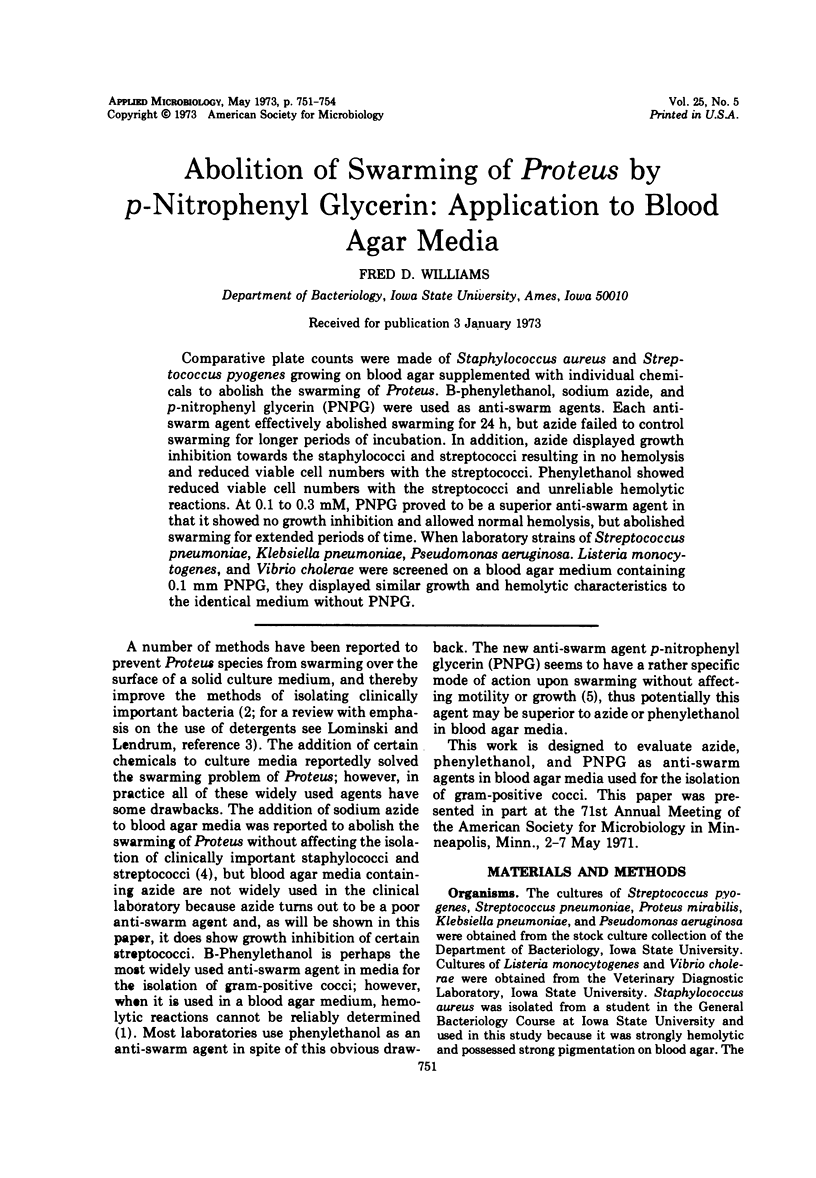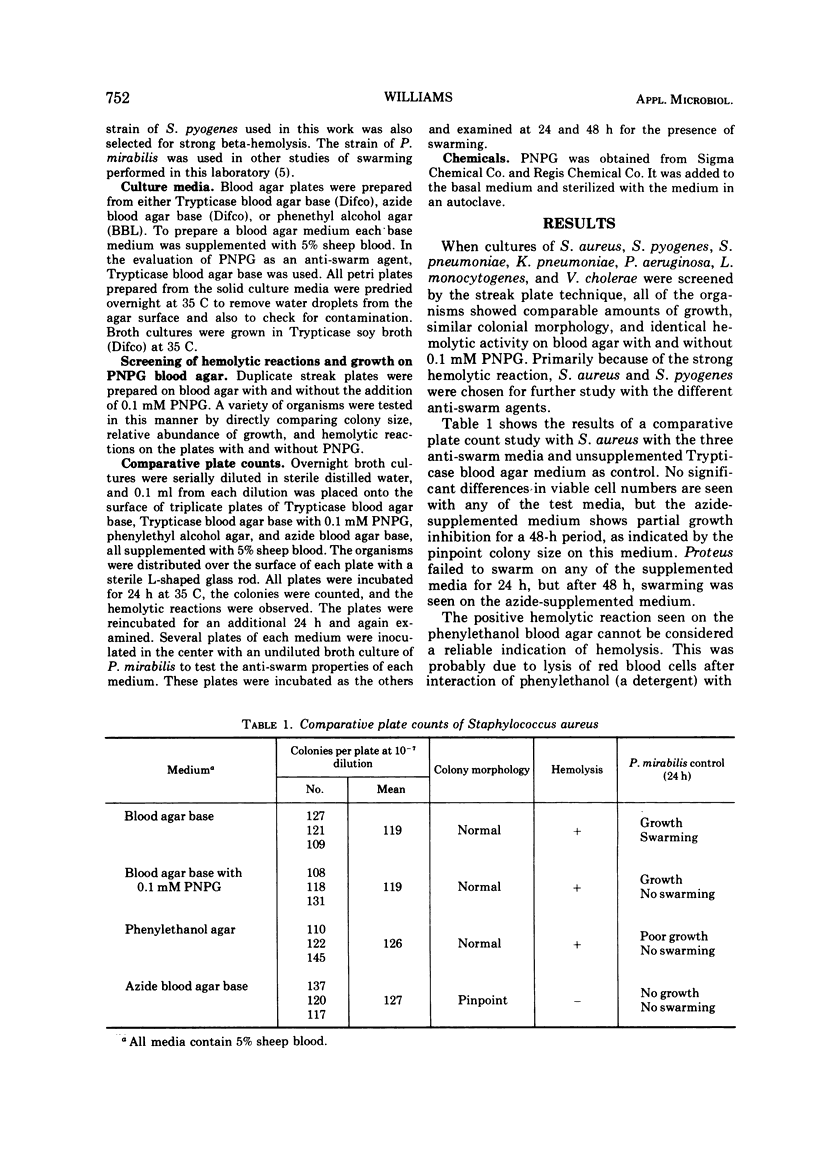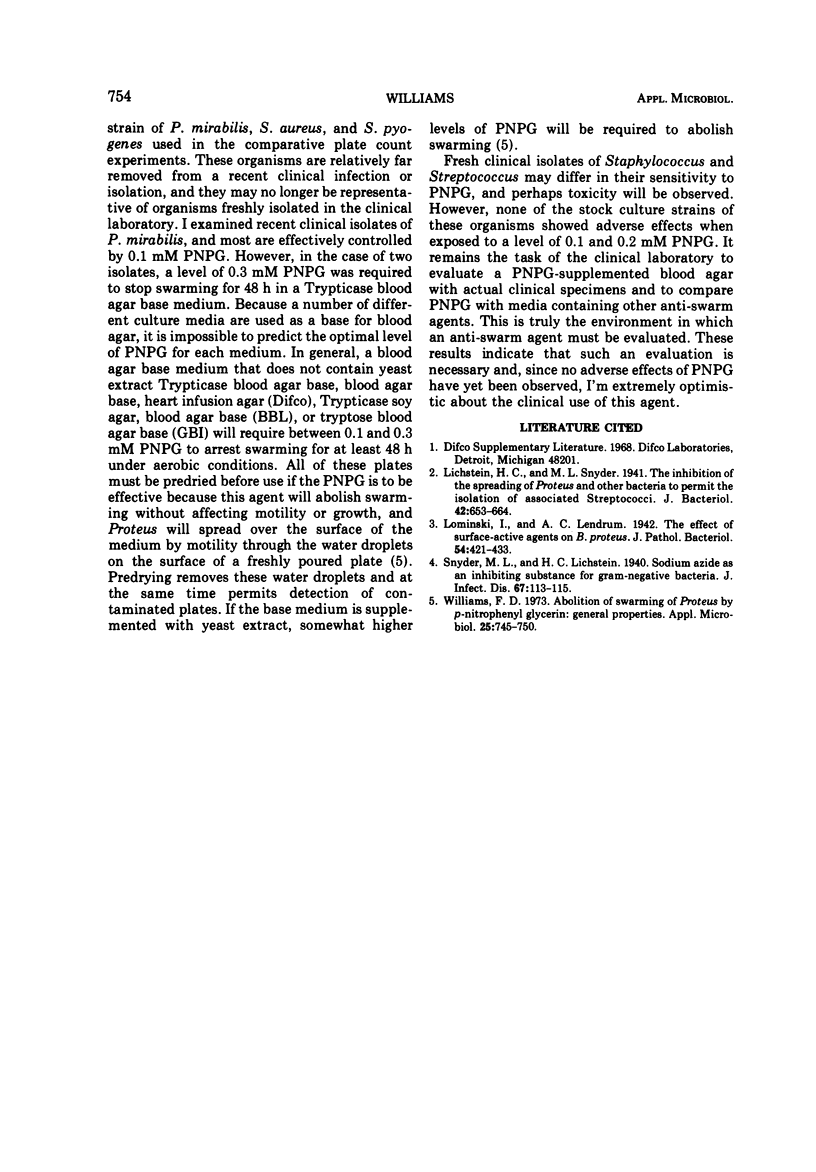Abstract
Comparative plate counts were made of Staphylococcus aureus and Streptococcus pyogenes growing on blood agar supplemented with individual chemicals to abolish the swarming of Proteus. B-phenylethanol, sodium azide, and p-nitrophenyl glycerin (PNPG) were used as anti-swarm agents. Each anti-swarm agent effectively abolished swarming for 24 h, but azide failed to control swarming for longer periods of incubation. In addition, azide displayed growth inhibition towards the staphylococci and streptococci resulting in no hemolysis and reduced viable cell numbers with the streptococci. Phenylethanol showed reduced viable cell numbers with the streptococci and unreliable hemolytic reactions. At 0.1 to 0.3 mM, PNPG proved to be a superior anti-swarm agent in that it showed no growth inhibition and allowed normal hemolysis, but abolished swarming for extended periods of time. When laboratory strains of Streptococcus pneumoniae, Klebsiella pneumoniae, Pseudomonas aeruginosa. Listeria monocytogenes, and Vibrio cholerae were screened on a blood agar medium containing 0.1 mm PNPG, they displayed similar growth and hemolytic characteristics to the identical medium without PNPG.
Full text
PDF



Selected References
These references are in PubMed. This may not be the complete list of references from this article.
- Lichstein H. C., Snyder M. L. The Inhibition of the Spreading Growth of Proteus and other Bacteria to Permit the Isolation of Associated Streptococci. J Bacteriol. 1941 Nov;42(5):653–664. doi: 10.1128/jb.42.5.653-664.1941. [DOI] [PMC free article] [PubMed] [Google Scholar]
- Williams F. D. Abolition of swarming of Proteus by p-nitrophenyl glycerin: general properties. Appl Microbiol. 1973 May;25(5):745–750. doi: 10.1128/am.25.5.745-750.1973. [DOI] [PMC free article] [PubMed] [Google Scholar]


